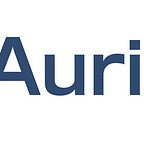Decentralized Computing
For the last fifty odd years, Computing has been centralized with applications running centrally and Data being stored on a Centralized server. While such application architectures have their benefits in terms of deployment and data integrity and all data transfers and transactions among users going through the centralized infrastructure, the flip side is the risk of cyber-attacks and the consequent data security. Hackers need to attack a single server to breach and data to steal. A DDOS attack on the single server can bring down user services, thus impacting enterprises and their users. A data breach can be fatal for an organization with loss of consumer and business data and privacy.
Decentralized computing is a paradigm shift in perspective and philosophy of computing with neither the application nor the data being store centrally, nor is user information and privacy data stored centrally with only the ledger being central. Hence, neither user nor transaction data is stored centrally. In financial applications, wallets and vaults are now decentralized on users’ devices. While this eliminates the multiple infrastructure and security risks, it is accompanied with its own challenges of Peer-to-peer communication including data redundancy on multiple devices and consequent security. Peer-to-peer transactions now need to be recorded on ledgers to maintain governance and transparency. Various techniques have been explored to ensure that user data and transactions are validated in a trust-less environment to ensure data integrity, each with varying trade-offs.
Blockchain is the first such endeavor to make breach head in decentralized computing and lead the way. Blockchain uses mining to validate transaction and update ledgers. Let’s dwell in more detail on the operational issues of employing blockchain.
Mining
In classical Blockchain, a trustless environment is provisioned to validate transactions. The Miner is to solve a mathematical puzzle to open the key to a blockchain wallet to read and validate transactions and update ledgers. The math puzzle has increasing difficulty, requiring increasing computing power to be employed by the miner, and therefore increased power consumption. To get under the hood of mining to see how it works, lets walk through a mining cycle.
A Miner must discover a wallet and make a request to solve the puzzle. Once the handshake Is complete, the math puzzle needs to be solved and transaction details, if any, are to be extracted, called “Proof of Work”. The miner must build a “Block” of such transactions and a chain of such blocks are then posted to the ledger. The ledger would verify time stamp and duplicates before updating on the ledger on a FIFO basis. The time stamp of the transaction on the ledger is the time stamp of “Proof of Work”, in other words, solving the math puzzle and extracting transactions to validate. Blockchain rewards miners with a stream of cryptocurrency for the mining effort, which also becomes a factor in the pricing of the cryptocurrency.
For example, Bitcoin pay out 12.5 coins every ten minutes to miners, amounting to 75 Bitcoins per hour. Being a public ledger, the cryptocurrency platform pays for mining. Assuming USD 10000 per coin, the outflow is USD 750000 per hour, towards mining. Recent report indicate that Bitcoin is down to one transaction per second, which would imply over USD 200 per transaction as the cost of mining, paid by all Bitcoin owners. USD 200 per transaction may work for a Public network but would be unviable for a Permissioned or Enterprise deployment, such as banks or healthcare.
Time Stamp Latency
Time Stamp Latency in Blockchain is tied to the Mining model for transaction validations. Blockchain infrastructures end up having three different time stamps for a single transaction or event.
1. Transaction time stamp — The time stamp of the actual transaction as executed by the sender.
2. Proof of Work Timestamp — The time stamp of the math puzzle being solved by the miner on a wallet and extraction of transaction history. Proof of work is also subject to the availability of the wallet being available online for mining. If the wallet is either switched off or disconnected from public networks, the proof of work will not be established.
3. Ledger time stamp — A Miner must collect a block of transactions before being able to post the transactions to the ledger. In Bitcoin, the miner updates ledger after collecting One MB of transaction data, which may take from hours to days after the first Proof of work is established by the miner.
In the event of a dispute, the affected parties will end up presenting 3 different timestamps for the same transaction, risking resolution or settlement. For example, if a user wished to pay his mortgage loan using Bitcoin, the user may still end up being penalized due to the latency or delay in the transaction update to the bank, leading to a dispute between customers and banks. In use cases such as Travel booking or hospitality, the timestamp latency will question the fairness of transactions here bookings are sequenced on a First-in/First-out basis.
Fraud Reporting
The Latency gives opportunity to numerous frauds. For example, a user may mirror his wallet on multiple devices and conducts multiple transaction with multiple parties, Only the first wallet to be mined and posted to the ledger would be legitimate while the other transactions can be treated as “Double-pay” frauds. This can cause considerable distress to the other affected parties as it is technically fraud.
Regulation and Fraud reporting
At this point, we don’t have a regulatory authority for cryptocurrencies to regulate and monitor such transactions. A Regulatory body conforming to the laws of the land would soon reduce stress and fear for investors in such situations.
Conclusion
Given these vulnerabilities in Blockchain, it would be difficult to perceive Blockchain suitable for enterprise applications such as Banking and finance, Government, or travel and hospitality.
Alternate solutions will be required to build Decentralized infrastructure to suit enterprise demands while building up Regulatory and monitoring infrastructure.
